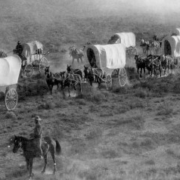The iceberg explanation of police use of excessive force
Ocean going ships, are occasionally in danger of hitting an iceberg. If the vessel hits an iceberg, not only can the ship’s vital components like its propeller or rudders be impaired, thus negatively effecting the ship’s maneuverability, navigation systems, and propulsion, but the vessel’s structure may be damaged, leading to flooding and potentially sinking the ship.
That is why over the past century a variety of protocols and technology (e.g., radar, sonar, and satellite imagery) have increasingly been used to prevent these kinds of incidents.
The challenge of not being able to see the entire picture is not endemic to ocean faring vessels and processes.
In the field of criminal justice, for example, police violence/excessive force is similar to an iceberg, where only a portion is visible to the public eye. The hidden portion beneath the surface represents the concealed instances of excessive force, which can be particularly dangerous.
The Nature of Police Violence/Police Use of Excessive Force
Few actions exist in a vacuum, and police violence, also known as excessive force, is no different.
More specifically, although reliable data is necessary to support claims about the frequency and types of such incidents, police violence/excessive force exists in a variety of contexts.
One of the most significant aspects to consider in addressing police violence is recognizing that it can occur both in public and private settings.
When police use of excessive force occurs in a public setting, there is a greater chance that it will be witnessed, including the possibility that it will be recorded via smartphone, and possibly shared on one or more social media platforms.
If the incident/s is particularly egregious, it may be the basis of a news media story. This information, in turn may lead to an investigation, the sanctioning of the officer/s, a change of policy, practice, etc.
The latter type of police violence (the one that is private), however, takes place away from the public eye, in areas where surveillance measures like CCTV, body-worn cameras, or dashboard cameras are less likely to capture the events. These secluded settings, such as back alleys, the back seat of police cruisers, or holding cells, can create an environment where abuse of power can go unnoticed.
Solutions used to address public police violence
Consequently, in recent years, along with demands to defund or abolish the police, we have witnessed a proliferation of recording technologies in law enforcement, such as dashboard and body-worn cameras. These tools provide a means to document police-citizen interactions and potentially expose instances of excessive force, and protect police officers from accusations of unnecessary force.
That being said, although collecting and analyzing video evidence is important, it doesn’t guarantee that an investigation, accountability (e.g., sanctions against involved officers, units or departments), or policy change will occur, nor does it insure that these actions will be done well.
Nevertheless, it serves as a starting point, as visible evidence can create pressure for change and prompt further examination of policies and practices.
To effectively address the issue of police violence, it’s crucial to rely not only on witness testimony or video evidence but also on comprehensive data collection, thorough investigations, and a commitment to accountability.
This requires systemic changes within law enforcement agencies, the support of external bodies for impartial investigations, and the willingness of policymakers to enact meaningful reforms.
By taking these steps, we can work towards reducing police use of excessive force and ensuring a more just and equitable society.
Photo Credit
Photographer: David Stanley
Title: Titanic Iceberg












